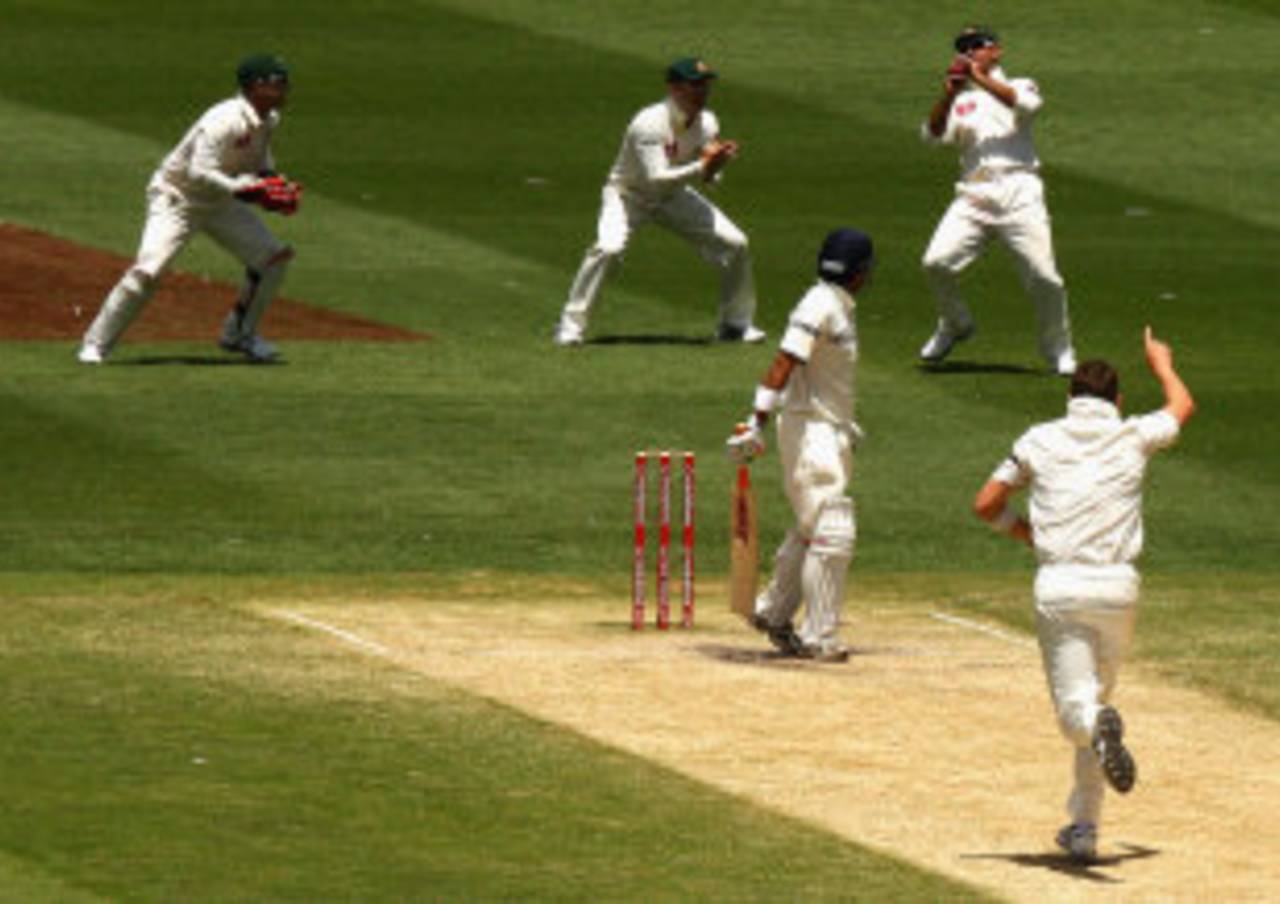Many cricket fans are fond of saying that the most dramatic cricket dismissal is one involving a cartwheeling stump, sent flying by a fast bowler. The pristine perfection of the carefully arranged stumps and bails, suddenly, violently disrupted by the irresistible force of the pace man, the stump sent flying dramatically - and now in the modern era, thanks to stump microphones, accompanied by the actual sound of the famous 'death-rattle' - is dramatic indeed.
I would like, however, to submit another candidate for Most Dramatic Dismissal: a sharp catch taken at slip in the opening overs of an innings, when the bowling captain has set an aggressive field for the new ball. Here again, there is a disruption of symmetry: the bowler runs in, the batsman edges, and the ball flies off, only to have its precise geometrical trajectory interrupted by the swooping slip fieldsman. The batsman's head snaps back, as he turns to look at his downfall even as the carefully arranged arc of the slips is radically set in disarray.
And this disturbance is precisely what is most pleasing about this sight: the sharp, dramatic change from the staged display, almost portrait-like, of the fast bowler running in, the slips, sometimes staggered, sometimes not, forming a cordon, the wicketkeeper crouching, the batsman at guard, and then in the space of a second, the ball flies sharply to the slips. There is a rapid transition from equilibrium to disruption. (The celebrations that follow have their particular choreographed beauty at times; sometimes the slip fielder goes down in a heap as the rest of his teammates run to the bowler; sometimes the catcher exultantly throws the ball high.)
With the new ball, too, there is the element of the foretold disaster; this is the kind of dismissal that is supposed to happen; the ball is hard and new and moving; the batsman is still finding his feet, and perhaps prone to the poke. So the slip dismissal with the new ball appears almost as a pleasing vindication of some unwritten law of cricket. This is how it was meant to be; we stand as witnesses to the working out of a cricketing preordainment.
Of course, part of the pleasure of watching a good slip catch is that the knowledgeable fan, indeed anyone that has ever played cricket, and spent some time in the slips, knows that slip catches are not easy; the ball travels at a fair rate of knots; it moves and spins; palms can be bruised, fingers and nails broken. So to watch a master at work in this domain is a true cricketing pleasure. The modern greats - like Mark Waugh, Stephen Fleming, Rahul Dravid, or Ricky Ponting - amazed us with their sure hands, their anticipation, their almost insouciant displays of leather pouching. The great cricket teams have always had great slip catchers; the two go together.
Perhaps one of my biggest grouses against the limited-overs versions of the game is their disposal of the aggressive slip cordon; it takes away the chance to witness this acute display of cricketing skill, this visually spectacular reminder of the beauties of cricket, lurking away, till suddenly summoned up by the combination of bowler and fielder. When we think about all that might be lost if we lose Test cricket let us not forget moments like these.
